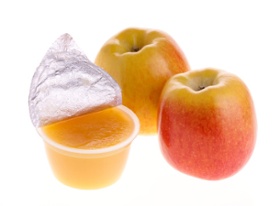 When developing a customized rollstock structure for barrier packaging applications, multiple variables must be considered. These include: food product, part design, processing conditions, distribution environment and retail conditions, all of which directly affect shelf-life performance.
When developing a customized rollstock structure for barrier packaging applications, multiple variables must be considered. These include: food product, part design, processing conditions, distribution environment and retail conditions, all of which directly affect shelf-life performance.
Once these variables have been defined, further refinement involves barrier specifications, material properties, shelf-life expectations, and handling conditions. These elements guide the design of the thermoformed part and help develop a rollstock structure optimized for barrier performance and regulatory compliance.
Depending on the end-use application and barrier requirements, ICPG can formulate customized coextruded barrier rollstock structures using substrates such as polystyrene, polypropylene, and polyethylene combined with high barrier materials for oxygen and moisture protection to meet application requirements.
Choosing the Right Barrier Packaging Substrate
High Impact Polystyrene (HIPS)
High Impact Polystyrene (HIPS) is a cost-effective material known for its stiffness and processability. Made by blending polystyrene (PS) with 5–10% rubber or butadiene copolymer, it offers higher impact strength than standard PS. Homopolymer PS can often be brittle, and can be made more impact resistant when combined with other materials. It’s widely used in food and medical thermoforming and form fill seal packaging due to its low cost and easy processability. However, with the implementation of Proposition 65, use of HIPS in food packaging applications is declining.
Polypropylene (PP)
Polypropylene (PP) is valued for its high temperature resistance, low density, and strength-to-weight ratio. Available in three main grades: homopolymer, random copolymer, and impact copolymer grades, PP can be customized to meet specific packaging demands. It is a semi-crystalline polymer that is hazy in its natural state, but can be made available as an exceptionally clear and high-gloss material through the use of specialty additives and processes it’s increasingly used in multi-layer barrier packaging substrates due to its recyclability and versatility.
Polyethylene
Polyethylene (PE) is a low cost, translucent thermoplastic polyolefin material that offers great versatility that spans across food, medical, cosmetics, automotive and construction applications for its high impact strength and puncture resistance at temperatures as low as -40C. There are three main grades of PE:
- High Density Polyethylene (HDPE)
- Low Density Polyethylene (LDPE), and
- Linear Low Density Polyethylene (LLDPE)
Polyofelins: Enhanced Barrier Packaging Substrates
As the global demand for sustainable, recyclable packaging grows, mono-material structures have emerged as a key innovation. Polyolefins like PE and PP offer strong moisture barrier properties, but require enhancement to address oxygen transmission challenges through use of a multi-layer barrier structure.
ICPG’s XPP enhanced barrier technology now makes this possible, with up to 60% improvement in oxygen and moisture barrier for polypropylene, and up to 40% for HDPE, compared to traditional grades.
Key advantages:
- Recyclable in mono-material and multi-layer high barrier form
- Matches or exceeds HIPS stiffness, enabling snapability for form-fill-seal applications
- Offers potential for downgauging to reduce material use
- Delivers improved clarity and reduced haze for enhanced shelf appeal
These advancements allow manufacturers to replace polystyrene while achieving high performance and meeting recyclability goals.
Multi-layer Barrier Structures: Sustainable and Scalable
Traditional multi-layer structures produced from PS & PET often rely on expensive processing and multiple materials, making them hard to recycle. In contrast, multi-layer polypropylene barrier packaging substrates are:
- Recyclable
- Compatible with closed-loop systems
- Designed for both performance and sustainability
With global packaging regulations evolving and brands under pressure to reduce plastic waste, recyclable barrier packaging substrates offer a future-ready solution.
For more information on ICPG's XPP Enhanced Barrier Polypropylene, download your own copy of our product sheet today or contact our team to discuss your barrier packaging requirements.




